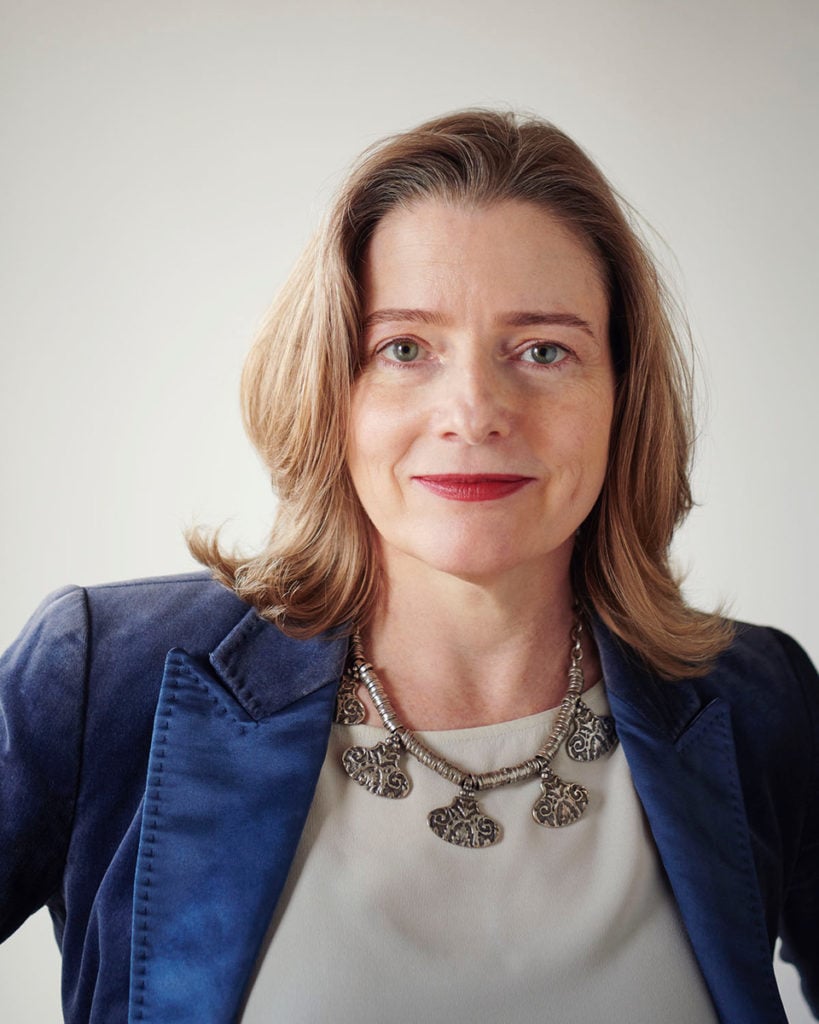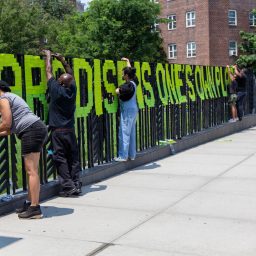Maybe you have more willpower or common sense than I do, but I, for one, have been spending too much time on social media lately. And there’s a meme that keeps popping up in my Facebook feed that goes something like this:
Books, music, poetry, film, etc. are getting you through this period of social isolation. Never doubt the value of arts and culture again.
It’s a perfect meme for me. It soothes my anxiety about being stuck in my home while my organization’s budget evaporates and the regular work of institutional planning becomes an exercise in imagining how this virus and the turbulent global economy might affect the arts sector over the next decade. And it clearly expresses my values! My whole career is centered around making sure artists have resources.
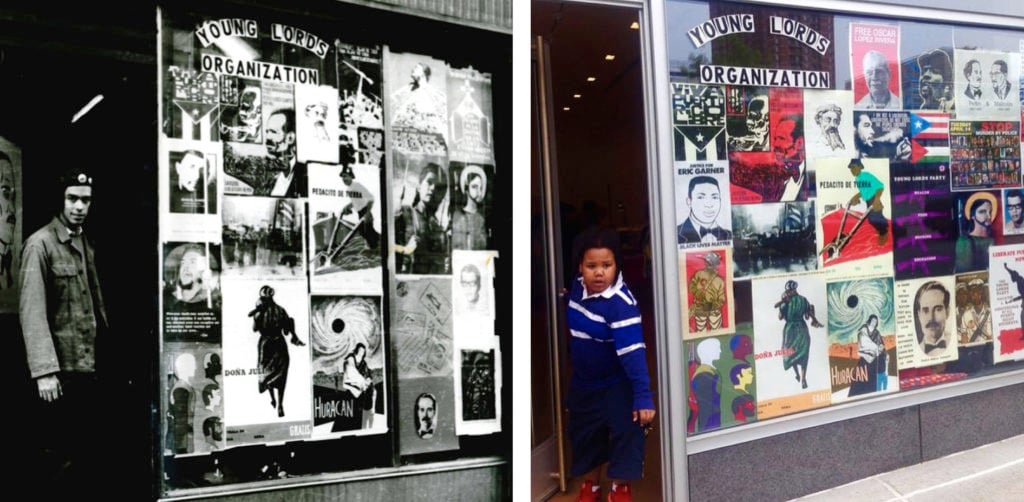
Recreation of the original storefront window of the Young Lords Party in East Harlem, 2015 Hunter East Harlem Gallery. Left: Juan Gonzalez at the original headquarters of the Young Lords Party in East Harlem, 1969, by Hiram Maristany ©. Courtesy Miguel Luciano.
But every time I have scrolled by this meme in these weird weeks, I’ve also worried that it could be interpreted—or, more precisely, misinterpreted—as a plan for the future. That would be a mistake, because the art we value and how we value it needs to change with the world around us.
A Question of Value
You could argue that we already value some art, like blockbuster museum shows or whatever trophies collectors are buying, too much. I believe this moment presents an opportunity to recalibrate, rather than simply increase, our cultural investments.
We can value whatever we want. We don’t have to value a Jeff Koons sculpture and the broad market forces it affirms so much more than we value the multi-year commitment an artist like Miguel Luciano is making to his neighborhood of East Harlem and its histories of mutual care and resistance, using everything from photographic interventions and walking tours to community meals and acupuncture workshops that revive the history of the Young Lords.
We have the power to decide to value art and culture in ways that support the kind of lives we want to be living. But to do that, we need more skin in the game—a greater shared commitment among a wider pool of stakeholders to recognize, articulate, and collectively wield the power art and culture already has, and to ensure it’s doing the civic, political, and social work we value the most.
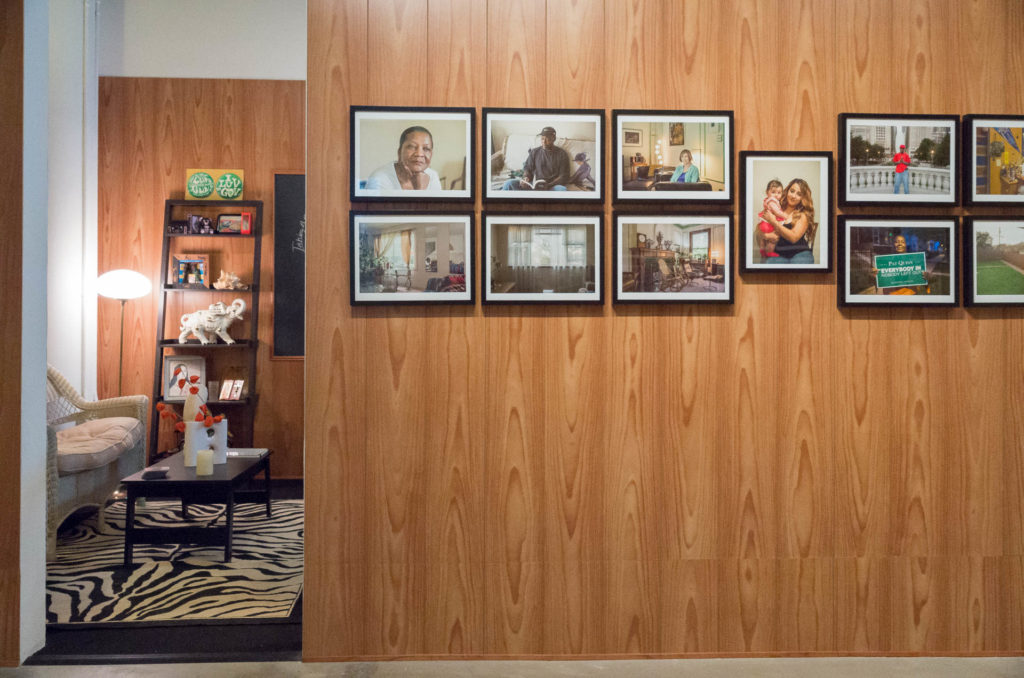
Laurie Jo Reynolds, installation for Tamms Year Ten Family Room, A Proximity of Consciousness: Art and Social Action, School of the Art Institute of Chicago, 2014. Photos by Soohyun Kim.
The good news is the world is going to change in ways that help us do that. With limited government support and continued reductions in philanthropic investments, it’s safe to say that resources for art will shrink considerably across the board for an extended period of time. But it doesn’t necessarily follow that the art of the future will be small, even if it’s made and seen at home instead of in a studio. A lack of funding, and even of mobility, will encourage art to become more integrated into the fabric of daily life.
The success of the work that comes out of this moment will rely on our newfound ability to value art that satisfies human needs within a community context, rather than market relevance. We should take this opportunity, as viewers and supporters of the arts, to detoxify. We could learn to embrace nuance instead of crave spectacle. We could invest more in the history that connects art practice to community organizing and movement building. We could even make more art ourselves.
What Will Change
In this new paradigm, art would be less professional, maybe. But it would retain its sense of ambition by becoming more relevant, permeable, and participatory—a force we tap into when we want to soothe, share, reach out, scratch an itch, or solve a problem.
This is what I mean by skin in the game, and I think that the success of art institutions is increasingly going to depend on supporting and amplifying the value of that connected, participatory feeling we can get from art.
For almost ten years, A Blade of Grass has been focused on the work of artists that are making purposeful, deliberate choices to integrate their work into life. We find the most ambitious examples we can of what is possible when you collaborate with communities, and we never stop being amazed that artists can co-create vast, visionary things around tables with regular folks. These have included Laurie Jo Reynolds’s movement to close a supermax prison; the Los Angeles Poverty Department’s feasible plan to house 7,000 people on Los Angeles’s Skid Row; and Dread Scott’s Slave Rebellion Reenactment, which enlisted thousands of participants and other stakeholders in a collective imagining of the end of slavery.
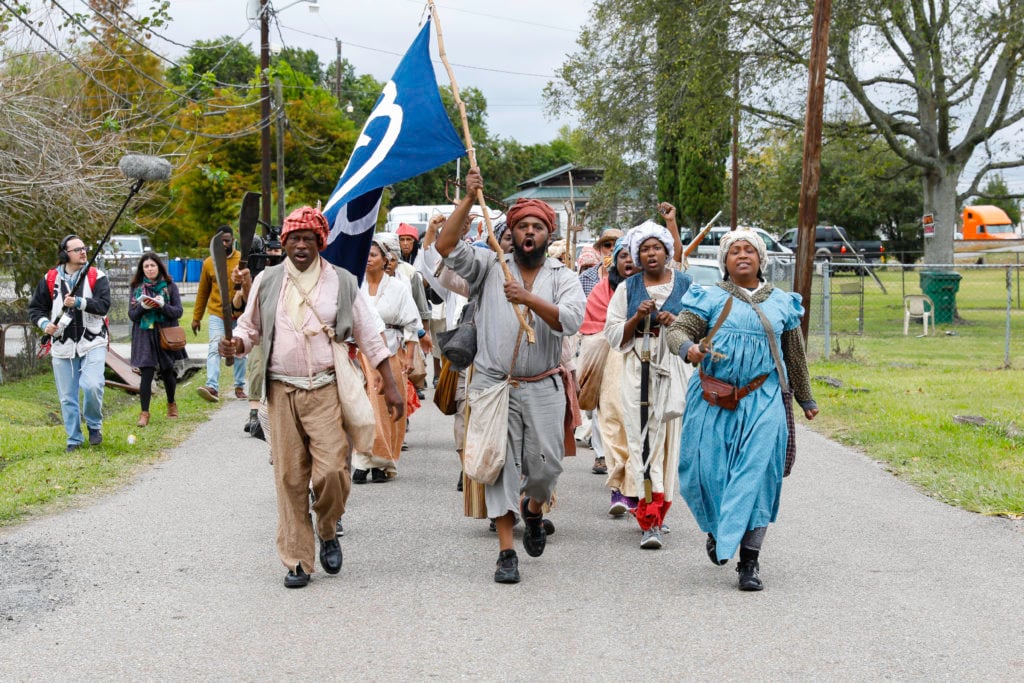
Participants in Dread Scott’s Slave Rebellion Reenactment marching across the 26-mile path through Louisiana. Costumes designed by Alison Parker, Photo: Soul Brother. Courtesy of SRR.
This art is powerful because it invites participants and viewers to consider their own agency and actions in the world. It teaches skills, helps us make better decisions, and encourages us to take better care of one another.
This kind of work will also help us make truly radical gains on some of the more intractable problems within the art world, like how art institutions fundraise and are governed. If the value—even beauty—of the art we prize is fundamentally social, the most powerful fundraising strategies are going to come from articulating that social value clearly, rather than foregrounding social capital or the potential to increase the value of one’s own collection. How else do you raise money for art that a collector can’t buy?
A New Business Model
Idealism and a relentless focus on how and why art is good for people could very well emerge as the foundation of the arts nonprofit business model moving forward. Will we raise a $20 million budget or a $3 billion endowment without turning art institutions into engines that directly benefit wealthy art collectors and center their needs? No. This business model is an efficient way to get very large donations from a small group of individuals. But I think it’s easier—or, at least, easier than conventional wisdom suggests—to get a broad and novel range of financial support when art is positioned as a public resource.
Direct beneficiaries of art projects that have a concrete social value will have an increased hand in paying for it. I know this because A Blade of Grass Fellowship projects have already been supported by city agencies like New York City’s Department of Probation, or institutions like Denver’s Rose Medical Center. These are not philanthropic relationships, and they’re not about art for art’s sake. In both cases, the artist is simply making work that directly serves probation officers and clients or nurses in a way that these entities can and are willing to pay for. What’s more, such broad participation might feel and work a lot better for a larger audience. Over time, this can lead to increased support from a pool of funders, including foundations and governments, who may not have historically supported or seen value in the arts.
In the face of the current crisis, we might all be ready to scale this approach. I’ve been raising my own budget for community-driven art for almost a decade, and I’ve been doing it by articulating the value and impact it has for other people. Don’t get me wrong: This approach is way harder than other types of fundraising and institution building in the arts because it’s not a direct transaction. I’m asking for a commitment to projects that are happening in prisons, or in a border town in Texas. They cannot be owned and benefit people the donors might never even meet.
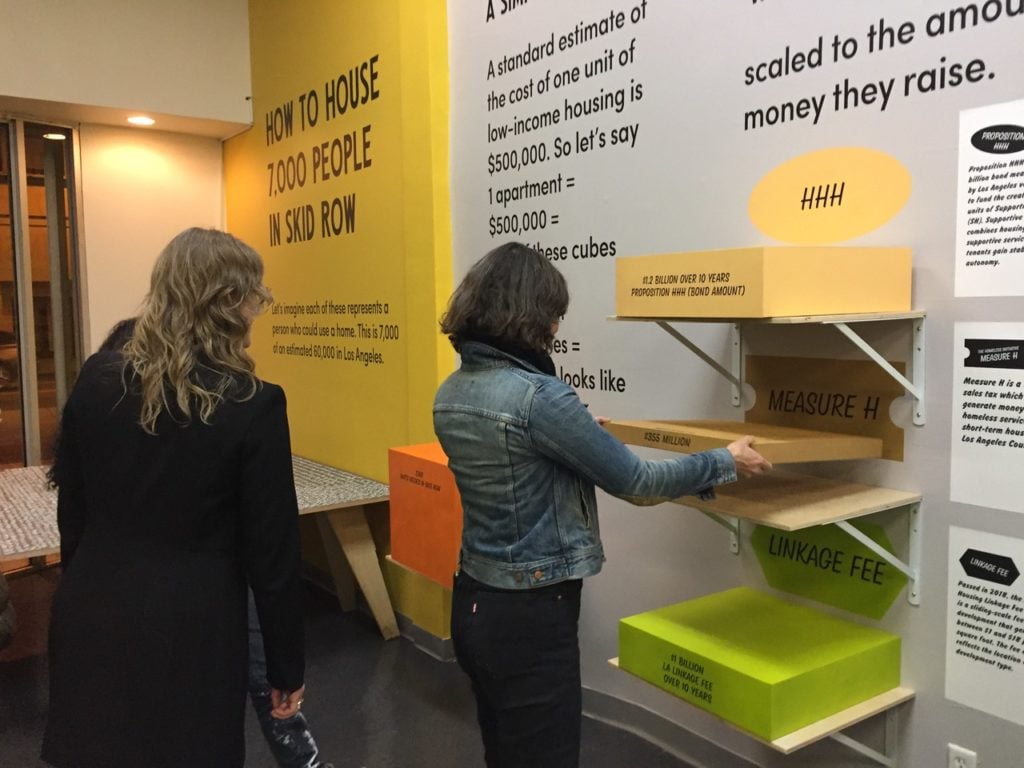
Los Angeles Poverty Department installation images of “How to House 7,000 People in Skid Row,” ongoing through September (though closed now due to Covid-19) at Skid Row History Museum and Archive, Los Angeles, CA.
Within my organization, the best donors and leaders truly want to understand the radical work artists are enacting. They want to be challenged, and have their lives and actions changed by the art. On a recent donor trip to witness Dread Scott’s Slave Rebellion Reenactment, I was grateful for the openness of the supporters who joined us, and how willing they were to not just experience a cool spectacle, but also sit with real discomfort and learn a pernicious history for which we all need to take more responsibility. Asking for this level of commitment is the most unlikely fundraising proposition I can think of. But it has worked for us precisely because these people already trust and value art and are legitimately hungry to enjoy it in ways that feel challenging, deep, and consequential.
Am I worried about the future, and do I believe that it will be economically devastating to the arts as a sector? Hell yes. But I also feel that we’ve been rehearsing for this future for quite some time, and that we have the tools to find abundance in it.
Deborah Fisher is the founding executive director of A Blade of Grass.
Follow Artnet News on Facebook:
Want to stay ahead of the art world? Subscribe to our newsletter to get the breaking news, eye-opening interviews, and incisive critical takes that drive the conversation forward.
